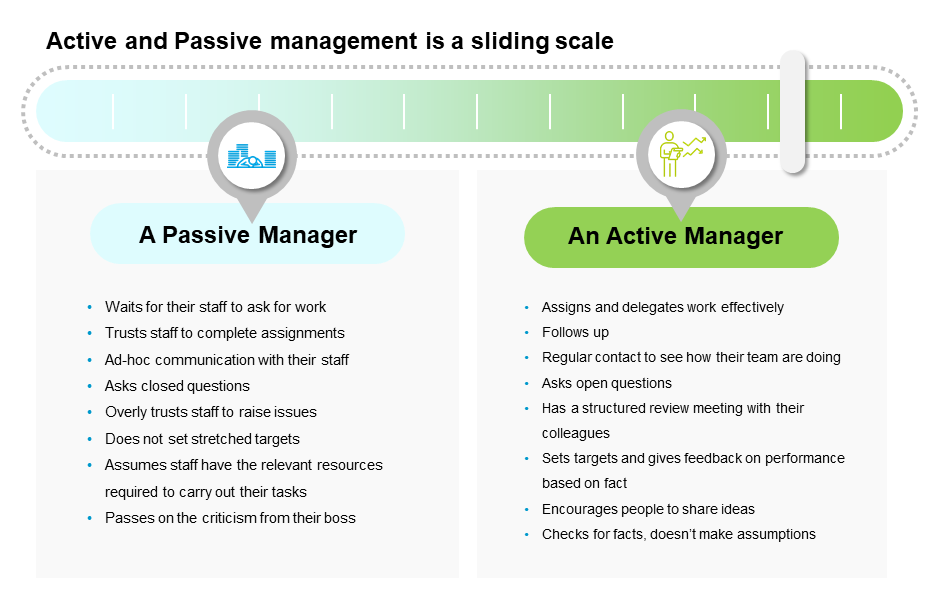- November 25, 2022

Active management is critical for sustained high performance:
- It ensures issues are raised and solved proactively, avoiding a culture of fire-fighting
- Staff’s skillsets are fully utilised and development areas picked up and addressed
- KPIs and targets are of central focus and specific actions to improve performance are assigned and owned through to completion
One of the clearest indicators of a strong active manager is a team that consistently outperforms others, but you may also see increased engagement from workers, increased retention, fewer complaints and better relationships with other departments.
What do we mean by an active manager?
An active manager follows up regularly with the team, proactively identifies and resolves issues and encourages the sharing of ideas. On the other hand, a passive manager believes no news is good news and does not give feedback to their team or set ambitious targets.
 In a lot of cases, managers are passive through no fault of their own: there’s a tendency to promote the best performers in current roles, rather than for the skills needed for a management role, and in many cases no (or little) additional training is given.
In a lot of cases, managers are passive through no fault of their own: there’s a tendency to promote the best performers in current roles, rather than for the skills needed for a management role, and in many cases no (or little) additional training is given.
When upskilling managers there are 3 common objections raised against active management principles that will need to be addressed:
-
-
- We don’t want to be micro-managers
- Things change so we can’t plan in advance, we have to stay reactive
- We don’t have time to actively manage all our people
-
We don’t want to be micro-managers
This is probably the most common misconception of active management – that it’s the same as micro-managing staff. In reality, active management is about the manager understanding the relevant timeframes to be checking-in on staff and following up, not a one size fits all.
It’s also important that both the manager and reportee understand the value of the check-in and that it’s there to support, flag issues and make everyone’s lives easier in the long run.
Things change so we can’t plan in advance, we have to stay reactive
While this is often true it doesn’t mean there shouldn’t be a plan in place and part of that plan needs to be contingencies for when things do change. Without a plan, we often see workers underutilised as they’re waiting at the beginning of their shift to be told what to do, or between jobs. While planning can cause some rework if things change, if there are contingency plans in place this rework is usually small in comparison to the benefit of fully utilised workers.
We don’t have time to actively manage all our people
When first introduced to people, active management sounds like a lot more work than they might already be doing and it can be hard for them to understand how it will all fit in. The key point here is understanding what is currently filling managers’ time: meetings that have little output, stepping down and doing the work of their direct reports, and fire-fighting to resolve issues. Working with managers to help them assess the best use of their time, and evidencing that active management reduces the need to fire-fight, creates capacity within their day, resolving concerns around this issue.
Supporting and developing active managers in your business will ensure all teams are consistently high-performing. But to do this the managers themselves need to understand what active management is and be confident that it will work for them. Putting the time and effort into this will quickly reap rewards in terms of business improvement.
